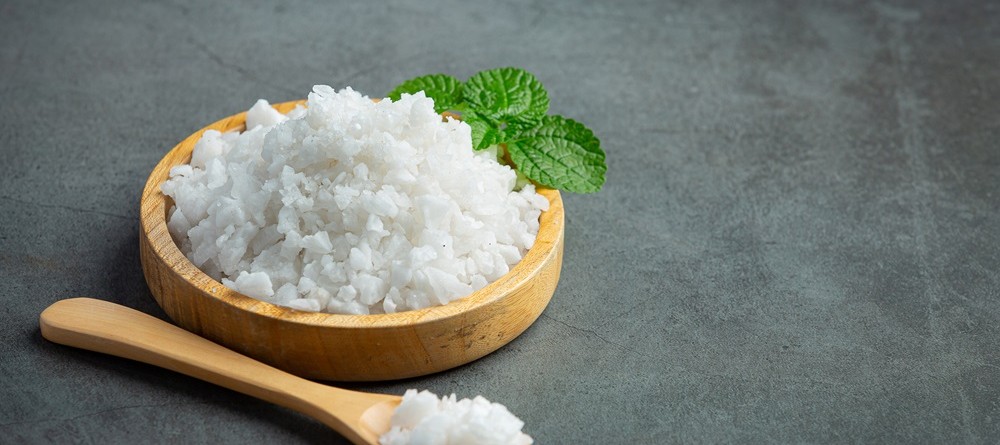Salt : Iodized vs. Non-Iodized
Salt is a kitchen staple, enhancing flavors and playing a vital role in our diets. Composed of sodium and chloride, salt is essential for bodily functions, but too much sodium can lead to health issues like high blood pressure. With options like iodized and non-iodized salts available, choosing the right one can feel overwhelming. This guide breaks down the differences, benefits, and considerations to help you make an informed choice.
What Is Iodized Salt?
Iodized salt is refined table salt fortified with iodine, a critical nutrient that supports thyroid hormone production. These hormones regulate metabolism and are essential for growth and development in fetuses and young children. Iodine deficiency can lead to serious health issues, including:
- Hypothyroidism: Low thyroid hormone levels, causing fatigue and weight gain.
- Goiter: An enlarged thyroid gland.
- Developmental Issues: Slowed growth and cognitive impairments in children.
Since the introduction of iodized salt in the 1920s, iodine deficiency has decreased significantly. Between 1990 and 2014, global consumption of iodized salt rose from 20% to 75%, yet nearly 1.9 billion people worldwide remain at risk of deficiency.
What Is Non-Iodized Salt?
Non-iodized salt lacks added iodine and comes in various forms, often prized for culinary uses due to their unique textures and flavors. Common examples include:
- Sea Salt: Harvested from evaporated seawater, often containing trace minerals.
- Kosher Salt: Coarser and less refined, popular for cooking and seasoning.
- Himalayan Pink Salt: Mined from ancient salt deposits, marketed for its mineral content.
- Fleur de Sel: A delicate, flaky salt used as a finishing touch.
- Black or Gray Salt: Known for distinct flavors and appearances.
While these salts may contain trace minerals like iron, calcium, or magnesium, the amounts are too small to provide significant health benefits.
Key Differences Between Iodized and Non-Iodized Salt
The primary distinction is the presence of iodine in iodized salt. Other differences include:
- Taste and Texture: Non-iodized salts, like sea salt or kosher salt, often have coarser grains or unique flavors, making them favorites for gourmet cooking.
- Processing: Iodized salt is highly refined, while non-iodized salts vary in processing levels, with some, like Himalayan salt, marketed as “natural.”
- Sodium Content: Both types contain similar sodium levels, though non-iodized salts with larger crystals may yield slightly less sodium per teaspoon due to lower density.
Who Benefits from Iodized Salt?
Most people in the U.S. get sufficient iodine from foods like dairy, eggs, and seafood. However, certain groups may benefit from iodized salt:
- Pregnant or Breastfeeding Individuals: Require 220 mcg (pregnancy) or 290 mcg (breastfeeding) of iodine daily, compared to 150 mcg for most adults. Iodized salt provides about 45 mcg per gram (⅛ to ¼ tsp).
- Vegans or Those Avoiding Animal Products: May lack iodine from dietary sources like seafood or dairy.
- People Eating Soy or Cruciferous Vegetables: These foods can interfere with iodine absorption.
- Residents of Iodine-Poor Regions: Mountainous or inland areas with low-iodine soil produce foods with less natural iodine.
If you’re unsure about your iodine intake, consult a healthcare professional or dietitian to assess your needs.
Is Iodized Salt Healthier?
Neither iodized nor non-iodized salt is inherently healthier, as both have comparable sodium content. The choice depends on your iodine needs and culinary preferences. Non-iodized salts may appeal to those who prioritize flavor or texture, while iodized salt is crucial for those at risk of deficiency.
Both salts should be consumed in moderation. The Dietary Guidelines for Americans recommend limiting sodium to 2,300 mg daily (about 1 tsp of salt). For those with high blood pressure, the American Heart Association suggests a stricter limit of 1,500 mg daily.
Salt Substitutes for High Blood Pressure
For individuals managing high blood pressure, salt substitutes containing potassium chloride may help reduce sodium intake and support healthy blood pressure. However, these substitutes carry risks, such as hyperkalemia (elevated potassium levels), which can affect heart function. Consult your healthcare provider before using salt substitutes, especially if you have kidney issues.
Additional Considerations
- Culinary Uses: Non-iodized salts like kosher or flaky sea salt are often preferred for specific dishes, such as grilling or finishing, due to their texture and flavor profiles.
- Iodine Sources: Beyond iodized salt, iodine is found in foods like seaweed, fish, dairy, and eggs. Multivitamins or supplements can also help meet iodine needs but should be taken under medical guidance.
- Global Impact: Iodized salt has been a public health success, reducing iodine deficiency disorders worldwide. However, access to iodized salt remains limited in some regions, contributing to ongoing health challenges.
Choosing between iodized and non-iodized salt depends on your dietary needs, health goals, and culinary preferences. Iodized salt is a simple way to prevent iodine deficiency, especially for at-risk groups, while non-iodized salts offer diverse flavors and textures for cooking. Regardless of your choice, moderation is key to maintaining a healthy sodium intake.
Important: Always consult a healthcare professional or dietitian before making significant dietary changes, especially if you have conditions like high blood pressure, thyroid issues, or kidney problems. They can provide personalized guidance to ensure your diet supports your overall health.











